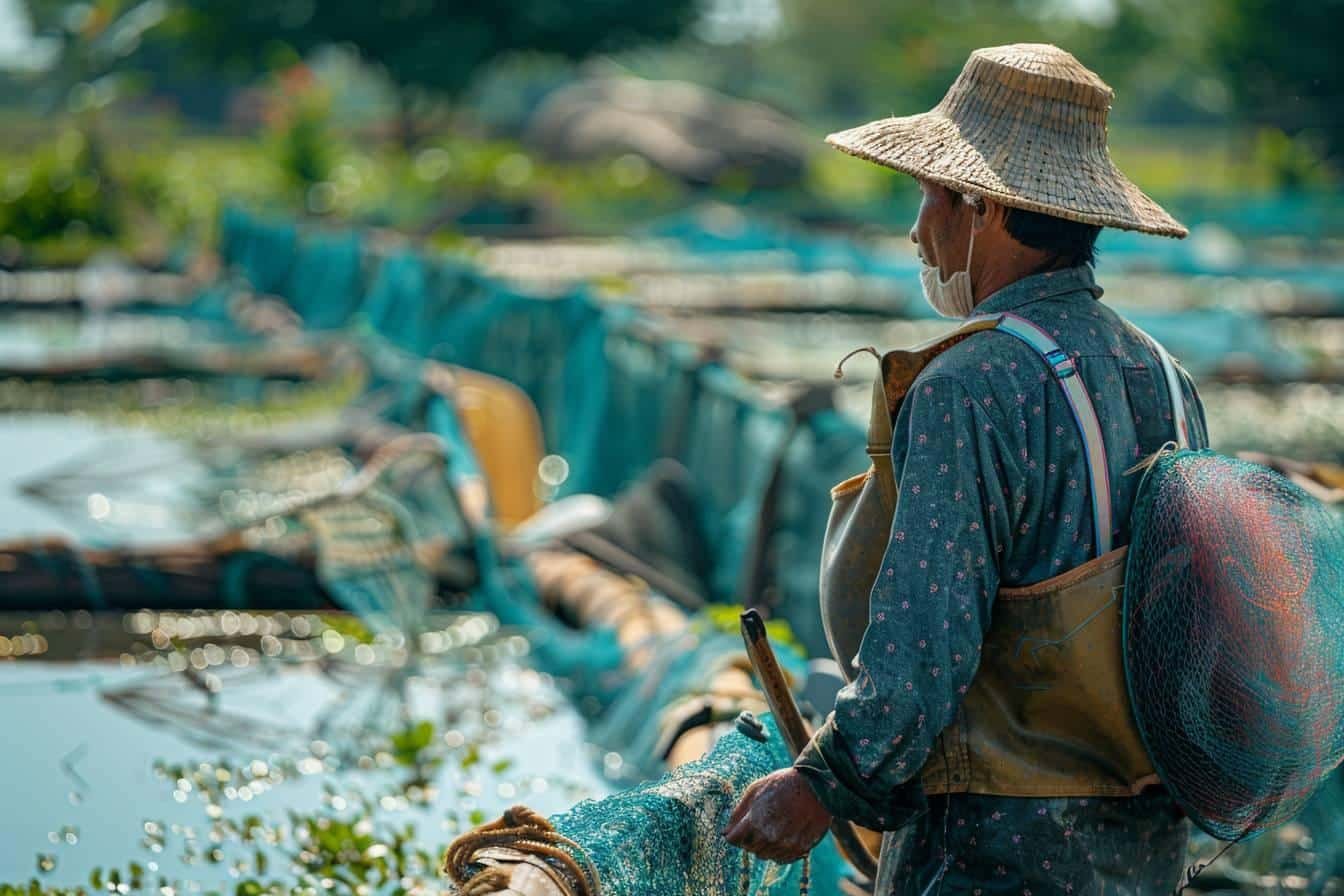Are you wondering "what is aquaculture"? Aquaculture is the farming of aquatic plants and animals in fresh or salt water. Whether you're an animal lover, like me, or just curious, this article will guide you through the principles and practices of aquaculture.
Definition and specialities of aquaculture
Aquaculture is the set of specific techniques and activities for growing plants and rearing animals in an aquatic environment. Here you can find a range of specialities, from fish farming to shellfish farmingby way of the algoculture and carcinoculture. In other words, aquaculture is not limited to fish, but also extends to shellfish, algae and crustaceans.
As for the specific terms used to designate these professions, an aquaculturist can also be a fish farmer, a shellfish farmer or an astaciculturist. Each profession has its own techniques and objectives, but they all share the same concern for sustainable and efficient production.
Aquaculture specialisations are key to understanding how these different techniques impact on biodiversity and aquatic ecosystems. Let's take a closer look.
Aquaculture methods and scales
Now, if we're talking about methods, aquaculture is a world in itself. One technique that is gaining in popularity is aquaponics, which combines fish farming with the cultivation of plants in symbiosis. Then there's integrated multi-trophic aquaculture, where the rearing of different species is optimised to maximise resources.
I remember this pleasant anecdote: during a seminar on aquaculture, a farmer showed me his aquaponics system, which was working perfectly with fish and vegetables of all kinds. It was a real spectacle!
Aquaculture can be carried out on several scales, depending on the quantities produced and the methods used:
- Small scale
- Medium scale
- Large scale
- Very large scale
Each scale has its own particularities and challenges. Rural, small-scale, commercial, subsistence or restocking aquaculture all require adapted skills and practices.

Aquaculture production and thalassoculture
Marine aquaculture or thalassoculture deals specifically with farming in seawater. You've probably eaten oysters or mussels, haven't you? These delicacies often come from well-managed mariculture facilities.
In France, the most common species include rainbow trout, sea bass and sea bream. But there are also notable developments in the production of sturgeon caviar.
Some people believe that mariculture is a source of pollution and environmental destruction. However, initiatives and associations are working hard to offer aquaculture that complies with high quality standards, such as Label Rouge or organic aquaculture.
Comparison table of the main fish species in France
| Species | Annual production (tonnes) | Main farming method |
|---|---|---|
| Rainbow trout | 37,000 | Pond fish farming |
| Bar | 5,000 | Mariculture |
| Sea bream | 2,800 | Mariculture |
| Sturgeon caviar | 500 | Fish farm |
Aquaculture professionals are often grouped into syndicates to promote environmentally-friendly production methods and guarantee product excellence. For example, these unions ensure compliance with quality and sustainability criteria, which are crucial to healthy aquaculture.
Environmental impact and economics of aquaculture
Now let's talk about the environmental impact. Aquaculture, although it provides an important part of our fish supply, can also cause water pollution and transform natural landscapes. Imagine a tranquil pond transformed into a fish farm; it makes you think.
The economics of this sector exploit scarce resources such as land, labour and capital to produce aquatic organisms in a controlled way. And guess what? Almost half of the seafood we eat comes from aquaculture.
Climate change brings its own set of challenges. Fish farmers must constantly adapt to ensure the sustainability of their production. Oh yes, and a little confession from a young animal-loving department manager: seeing healthy fish on my shelves, thanks to sustainable practices, is heart-warming.
Economics and adaptation in aquaculture
- Exploiting scarce resources
- Water pollution
- Landscape transformation
- Adapting to climate change
The European Maritime Affairs, Fisheries and Aquaculture Fund (FEAMPA) is there to support the sector. It supports projects aimed at sustainable fishing and the development of a blue economy, while promoting international governance of the oceans.
Projects co-financed by the FEAMPA
- Setting up pilot sites for effluent treatment
- Development of closed and semi-closed circuit fish farming
- Help for young fishermen to set up
Ecosystem approach and sustainability in aquaculture
Finally, aquaculture must adopt an ecosystem approach. This means taking into account the whole ecosystem in which it is embedded, to balance the objectives of environmental sustainability, economic stability and social acceptability.
The idea is to minimising carbon footprint and pay attention to the product life cycle, all the while taking profitability into account. A real challenge, but essential for the future.
And between you and me, as a nature lover, I think it's vital to preserve our resources and strike a balance between production and respect for the environment. Aquaculture plays a key role in food security, generating not only jobs but also a diversification of coastal activities.
Let's not forget that our practices today will shape the ecosystems of tomorrow. Responsible aquaculture could well be the solution to feeding a growing world population while respecting our beautiful blue planet.
